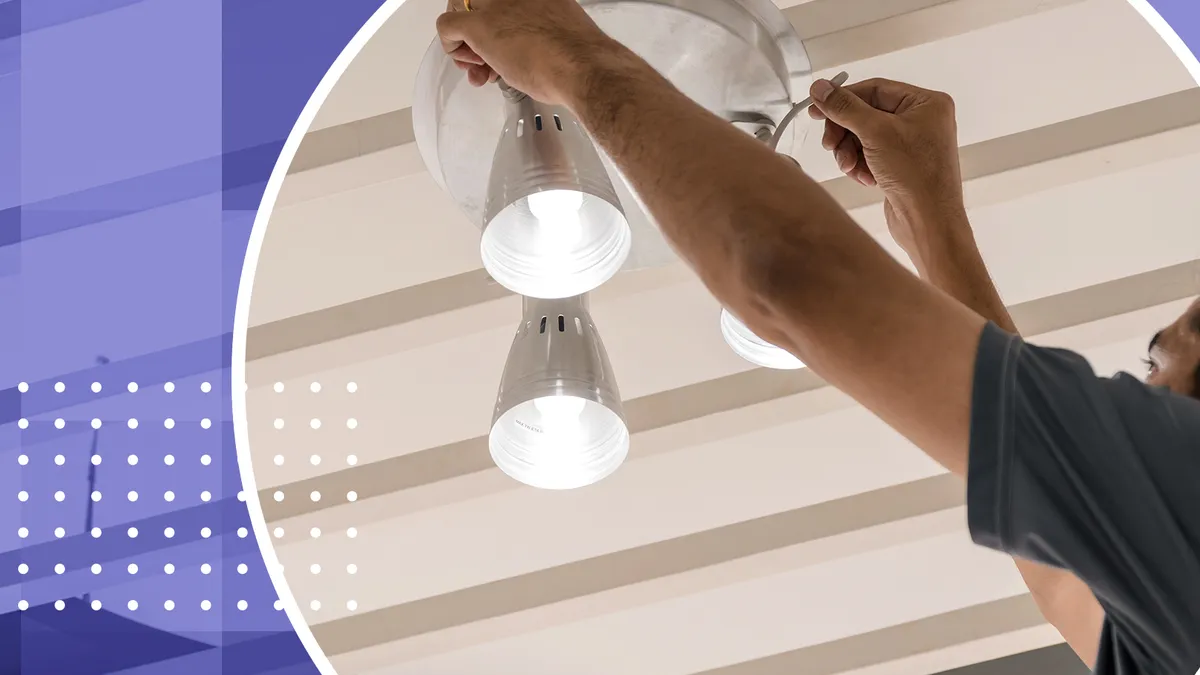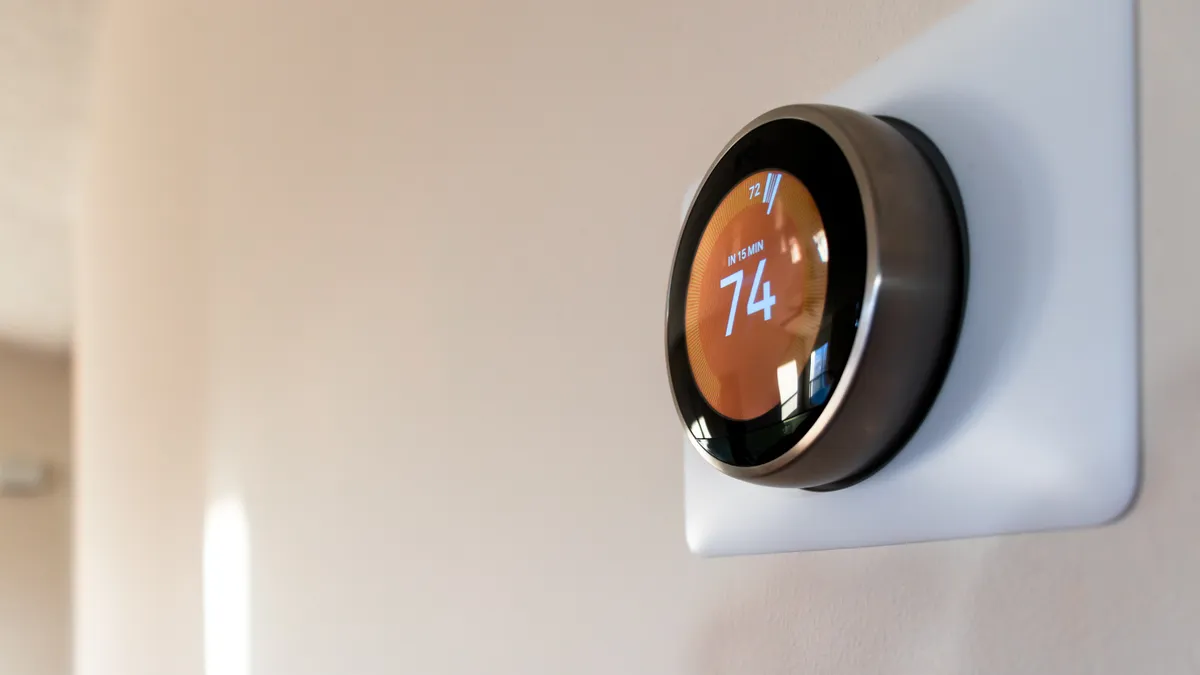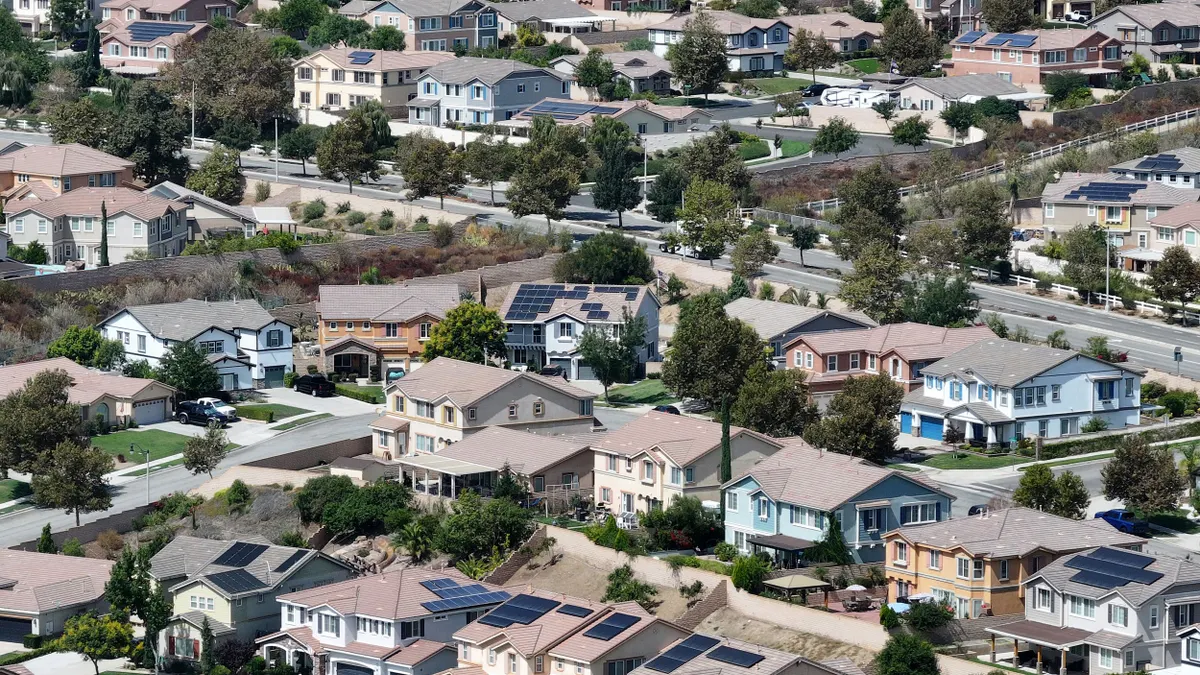In the waning days of 2019, the U.S. Department of Energy (DOE) rejected stronger efficiency standards for common household incandescent lightbulbs. It was a move that closed out the year on a dark note for efficiency advocates, who say the Trump administration took a number of steps to keep older technologies on shelves and make it harder for consumers to save energy.
Rules related to DOE's appliance standards program — covering lightbulbs, testing processes, gas furnaces, dish washers and more — have all been the subject of proposed changes by the Trump Administration. Efficiency advocates say none of them will help to save energy.
"Appliance standards have historically been bipartisan."

Lauren Urbanek
Senior energy policy advocate, Natural Resources Defense Council
The attacks on energy efficiency and appliance standards "are from a philosophical position that regulation is bad," Lauren Urbanek, senior energy policy advocate at the Natural Resources Defense Council, told Utility Dive.
Product associations argue consistent rules must be set through a transparent process.
Trump's campaign promise to end "job-killing regulations" has directly impacted some manufacturers and retailers. The White House says the president has "led historic deregulation efforts," extending far beyond energy efficiency, that are saving consumers billions.
However, efficiency experts say consumers are paying billions more on utility bills because of Trump's deregulatory policy. And they say the changes to appliance standards are a surprise because the program has typically drawn support from both sides of the aisle.
"Appliance standards have historically been bipartisan," Urbanek said. "They have historically been just common sense."
"There's been some retrenchment on policy," American Council for an Energy-Efficient Economy (ACEEE) Senior Policy Advisor Lowell Ungar told Utility Dive. "A lot of efficiency policies at the federal level are weakening."
So what does 2020 hold for consumer products and efficiency policy?
Lightbulb efficiency
The fight over lightbulb efficiency standards is playing out on two fronts, but experts say they could ultimately be consolidated into a single court case.
Earlier this year, DOE reversed a 2017 decision under President Barack Obama that expanded the types of bulbs covered under stronger standards. In response, more than a dozen states and several environmental groups filed lawsuits in November, maintaining that the decision amounted to an illegal rollback of standards.
Under the Energy Policy and Conservation Act (EPCA), DOE's rulemaking could be unlawful if it is determined as a reversal of energy efficiency standards. The rulemaking affected general service lamps, and the case is currently in the U.S. Court of Appeals for the Second Circuit.
DOE's more recent Dec. 20 rule impacted general service incandescent lamps, the standard bulbs found in most homes, and experts say the decision will almost certainly wind up in court as well.
According to NRDC, the combined lightbulb actions could raise consumer power bills $14 billion annually.
Michael Weems, vice president of government engagement at the American Lighting Association (ALA), says manufacturers just want consistency. The group says the Obama-era changes to lightbulb standards were made unlawfully and Trump is simply undoing that wrong.
President Obama's move to expand the types of bulbs covered by the standards "was inappropriate and illegal," extending definitions and standards beyond what Congress had authorized, Weems told Utility Dive.
But Andrew deLaski, who heads the Appliance Standards Awareness Project, sees a coordinated attack.
"The government wants to eliminate lightbulb standards in two steps ... For sure this will end up in court."

Andrew deLaski
Appliance Standards Awareness Project Executive Director
"The government wants to eliminate lightbulb standards in two steps," he said. "The first is to narrow the definitions and the second is to determine the standards don't need to be amended. But both turn on the question of whether a tighter backstop standard was triggered.
That's likely to be where court arguments focus, offering an option to consolidate the cases. "They turn on the same legal questions," said deLaski. "For sure this will end up in court."
Gas furnaces, water heaters, dishwashers
DOE has proposed changes for other products as well.
In July, in response to a 2018 request from the gas industry, the agency proposed changes for residential furnaces and commercial water heaters that use natural gas or propane. At issue is the different equipment required by condensing heaters, which the industry says requires they be put in a separate product class.
The American Public Gas Association, American Gas Association, National Propane Gas Association and the Natural Gas Supply Association have argued in comments on the rulemaking that DOE "cannot lawfully adopt standards that would effectively eliminate gas products that are compatible with the conventional atmospheric venting systems built into many of the existing buildings in which gas products are installed."
The change would alter DOE's definition of "performance characteristics" to require separate standards for condensing and non-condensing products. In its proposed rulemaking, the agency said it agreed with the gas industry and is "very concerned about ensuring energy affordability."
NRDC and other efficiency advocates dispute the gas groups' idea of a "performance characteristic" and warned in comments that the change "would have an extremely detrimental impact on the potential for natural gas savings from future appliance standards."
There is also a push from DOE to create a new class of dishwasher standards for units that can complete a cleaning cycle in one hour, and Trump has argued that models focused on efficiency are not as effective. Efficiency advocates oppose such a move and say most washers already have that option, though it requires a consumer to override more energy efficiency efficient defaults.
"In creating this new class, no standards will apply until they get around to creating a standard," deLaski said. "It looks to us like an end-around to the anti-backsliding clause," which outlaws reverting to less stringent energy efficiency standards.
Delayed appliance standards
While DOE has issued some rules, mostly the administration has been slow to review standards according to the legally required timelines, and at times held back previously-finalized updates.
In a rare win for efficiency, the U.S. Court of Appeals for the Ninth Circuit in San Francisco in December directed DOE to publish four appliance standards that had been finalized under Obama but not published. Trump's DOE has missed 18 deadlines to review standards, according to the NRDC. The newly-published standards cover portable air conditioners, uninterruptible power supplies, air compressors and commercial packaged boilers.
DOE, through the Buildings Technologies Office, sets minimum energy efficiency standards for approximately 60 categories of appliances and equipment used in homes, such as space heating and cooling, refrigeration, clothes washing and drying, and lighting.
DOE "is striving to meet [its] legal obligations under the Appliance Standards Program" and is making progress on missed deadlines, a DOE spokesperson told Utility Dive. But the progress DOE described includes the delayed standards the court directed the government to publish, as well as the lightbulb changes drawing the ire of advocates.
Looking ahead, deLaski said he is watching for DOE to issue more "no-standard standards."
"This administration seems to be all about how to avoid setting these standards, as opposed to how to make progress on energy efficiency," deLaski said. "It's an effort to deny we're making technological progress."
Challenge likely to changes in DOE energy efficiency thresholds
Also this month, DOE published changes to the process for updating appliance efficiency standards that raise the bar for the amount of energy efficiency improvements a standard must achieve before the agency will consider implementation.
The changes to the process rule, formally titled "Procedures, Interpretations, and Policies for Consideration of New or Revised Energy Conservation Standards for Consumer Products," require a new standard to save 0.3 quadrillion BTUs of energy consumed by appliances on site over 30 years.
According to a DOE statement, over the last three decades, 60% of appliance standards met that 0.3 quad threshold, and the 40% that fell under the threshold "accounted for just 4% of total energy savings."
But that 4% represents $80 billion in savings, coming out of $2 trillion in total savings from lower energy costs, according to deLaski.
According to a DOE spokesperson, the process rule changes "streamline and modernize its process for setting energy efficiency standards" and "make substantial improvements" including increased transparency, accountability, and certainty for stakeholders.
The North American Association of Food Equipment Manufacturers said it supports the change as it includes "substantial improvements" to the process rule, and will "codify industry consensus standards for test procedures."
A court challenge is "likely," deLaski said, though the timing is uncertain. "To litigate something you have to show harm," he said. "Does the harm come from changing the process or applying it?"
Testing procedures
DOE is also considering changes to how it grants waivers of energy efficiency testing requirements to product manufacturers, making it easier to avoid product assessments for half a year.
Testing waivers have the potential to be very significant, according to Urbanek. Manufacturers can currently apply for a testing waiver, but DOE is proposing a 30-day deadline to act. If the agency doesn't respond in that time, the six-month waiver would automatically go into effect.
"DOE doesn't really do a whole lot within 30 days. Pretty much ever," said Urbanek.
"Companies are not applying for waivers without reason now, because there is a good process in place. But if they can do whatever they want, why wouldn't they?" said Urbanek. "The change opens a loophole, allows it to be more like the wild west when it comes to test procedures."
Even if a manufacturer's waiver is ultimately denied, the expedited process would allow non-complying products to stay on shelves an additional six months. Testing waiver changes are currently in draft form.
What could happen under a new administration?
With the 2020 Iowa Democratic caucuses less than two weeks away, advocates are beginning to wonder what might happen with energy issues under a new administration.
Up first will be the decision to abandon or stick with the United Nations Paris climate accord. While Trump has announced his intention to exit, a formal withdrawal cannot actually take place until Nov. 4 — one day after the election.
A new report from ACEEE and other efficiency groups concludes energy efficiency could deliver more than 40% of the carbon reductions needed globally to meet Paris Agreement climate targets. But "to save the billions and billions of dollars that is available from energy efficiency and to meet climate goals, we need to be making major advances," Ungar said.
After that, much would fall to the newly-elected President.
"In a best case scenario, if a new administration comes in, there is a good bit they can do right away to start making progress," Urbanek said. "Some things can be done through executive order, but the highest priority is taking steps to get back on track with deadlines."
"I think it will be top of the list to get going on new standards, catching up on the backlog of overdue efficiency improvements, to reverse some actions designed to undermine energy efficiency standards," said deLaski.
Even then, however, a more efficiency-minded administration will still need to go through the rulemaking process, which he said will result in delays and lost energy savings. "It will take time; it can't be done with the snap of a finger," said deLaski.
"A patchwork of regulation may work for some industries, but for retail it's very hard to build 51 different products."

Michael Weems
Vice president of government engagement, American Lighting Association
ALA's Weems says lighting manufacturers don't have specific policy goals in the new year: they just want to see standards set according to the law.
"We always are hopeful for consistency," Weems said. Beyond the federal level, "the challenge is always California."
California often sets tighter product standards, and other states are now beginning to follow suit. But manufacturers say that can create problems.
"A patchwork of regulation may work for some industries, but for retail it's very hard to build 51 different products," Weems said. "We will continue to push for consumer choice in energy efficiency products and work with stakeholders."
ACEEE Executive Director Steven Nadel expects 2020 will be an "interesting" year for energy efficiency at the federal level, with the issues discussed above continuing to play out.
"Because 2020 is an election year, there is likely to be more rhetoric than normal on energy and climate issues and less action, as enacting legislation in an election year, particularly at the federal level, is usually very challenging," he wrote in a Jan. 2 blog post.
Nadel said he expects more action at the state and local level, a point echoed by other experts.
GreenGen CEO Brad Dockser expects energy efficiency gains will likely continue because at this point they have momentum, he told Utility Dive. His company provides efficiency solutions to a variety of property types.
"Efficiency has already jumpstarted and isn’t likely to look back," Dockser said. "The cities and states that have moved quickly into the gap that the [federal government] has created are accelerating energy efficiency through new building codes and regulations."






















